|
|
|
|
|
 |
 |
 |
 |
|
P R O F I L
E
|
|
|
|

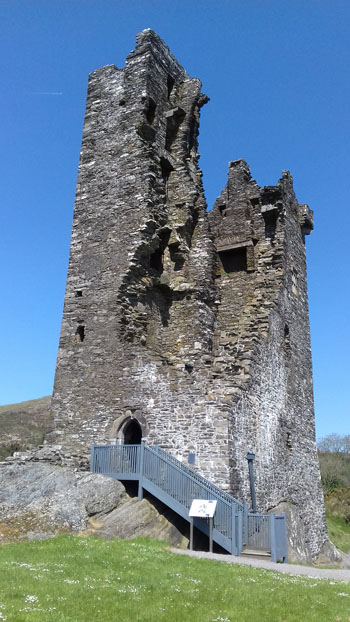 Background to the Donovans
Background to the Donovans
and Castle Donovan
Cork in Munster Province
Ireland
The Irish have dispersed across the world especially to the former British Empire in the 19th century. Localities like Newfoundland have to this day, isolated settlements where the populace speaks with a strong Irish accent that has changed little since the early settlers arrived. In 1841 the population of the Emerald Isle stood at eight million. Today it is around six million. The prime reason for this is the potato famine of the mid-19th century. Potatoes were a major part of the peasantry diet and when blight hit the crops between 1845 and 1849 famine struck. It is estimated that 800,000 starved to death as a result and an estimated two million sought a new life away from their native shores. This resulted in Donovans first settling in London and then moving to Surrey where the family integrated with the local populace and prospered, leaving a rich cultural, prosperous and religious inheritance for their descendants thereafter.
Saint Patrick first introduced Christianity to Ireland in the fifth century. However Ireland has historically been the subject of invasion, whether it be the Vikings or later the Cambro-Norman invasion of the twelfth century; the name referring to Welsh Knights of Norman origin. This invasion put Ireland under the rule of England's King Henry II. Thereafter intrusion into Ireland from Great Britain has been a thorn in the side of the Irish.
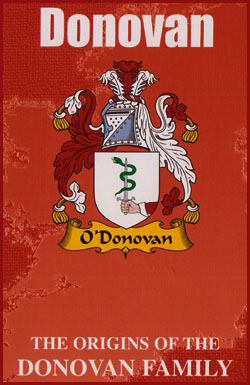 Tracing the earlier history of the Donovans before they came to England is a fascinated task. Munster has been the traditional heartland of the Donovans since the twelfth century Cambro-Norman invasion. Historically the lineage goes back a lot further however and according to Milesian genealogies Heremon and Heber ruled their conquered land as early as 1699 BC. The Donovans trace their descent back to Heber who was killed by Heremon in a territorial squabble. Such territorial disputes over the centuries led to rivalry between the septs or clans and Castle Donovan in north-west County Cork in the province of Munster is a classic example of the outcome of such rivalry. Earlier Donovan strongholds also included County Kerry . Here the kingship of Munster was being disputed around 977 AD and following the murder of Mahon the kingship moved to Maolmoradh and Donovans were rewarded with a grant of lands for their involvement. Around this time the Donovan or O'Donovan name was assumed and the sept or Clan Cathail established. (The use of O as a prefix denoted grandson of.)
Tracing the earlier history of the Donovans before they came to England is a fascinated task. Munster has been the traditional heartland of the Donovans since the twelfth century Cambro-Norman invasion. Historically the lineage goes back a lot further however and according to Milesian genealogies Heremon and Heber ruled their conquered land as early as 1699 BC. The Donovans trace their descent back to Heber who was killed by Heremon in a territorial squabble. Such territorial disputes over the centuries led to rivalry between the septs or clans and Castle Donovan in north-west County Cork in the province of Munster is a classic example of the outcome of such rivalry. Earlier Donovan strongholds also included County Kerry . Here the kingship of Munster was being disputed around 977 AD and following the murder of Mahon the kingship moved to Maolmoradh and Donovans were rewarded with a grant of lands for their involvement. Around this time the Donovan or O'Donovan name was assumed and the sept or Clan Cathail established. (The use of O as a prefix denoted grandson of.)
Henry VIII with the religious Reformation effectively outlawed Roman Catholicism in the early 16th century and the settlement of loyal Protestants into Ireland resulted in land grabbing. The Donovans lost much of their territory and their castle stronghold as a result. The reaction was inevitable and hundreds of Protestant settlers were driven from their lands as the Donovans vented their fury. The reaction from England was the Cromwellian invasion in the mid 17th century. Catholic estates such as those of the Donovans were 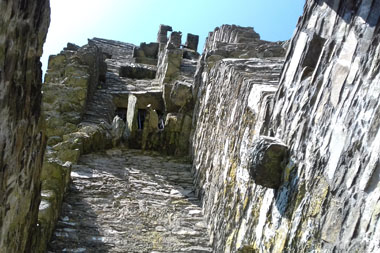 confiscated and their territorial castles wrecked. Such was the fate of Castledonovan which had been the focus of the Donovans for decades. Thereafter it remained unoccupied and derelict.
confiscated and their territorial castles wrecked. Such was the fate of Castledonovan which had been the focus of the Donovans for decades. Thereafter it remained unoccupied and derelict.
Left - Castledonovan interior.
Exploitation and both political and military involvement in the neighbouring Britain created friction with regard to Irish independence but also created economic opportunities. Even today Ireland is a divided nation with the North and South. Bitter struggles have ensued over the centuries involving Para-military forces and governmental nightmares. 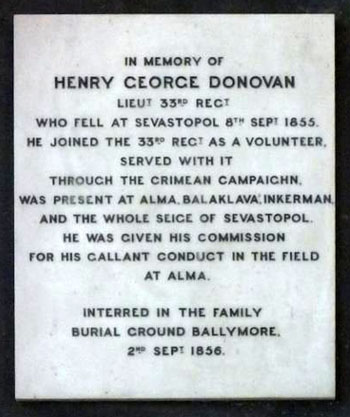 Also the Irish have participated in defeating many threats to the British Isles with participation in World Wars on the side of England. Earlier they were participant in the Crimean Wars with Russia as the number of cities with trophy cannons testify. The memorial tablet to the left confirms the Donovan participation with British military. In this example it was a voluntary involvement with the Anglo-French forces that cost the life of this soldier at the Battle of Malakoff, a part of the Siege of Sevastopol.
Also the Irish have participated in defeating many threats to the British Isles with participation in World Wars on the side of England. Earlier they were participant in the Crimean Wars with Russia as the number of cities with trophy cannons testify. The memorial tablet to the left confirms the Donovan participation with British military. In this example it was a voluntary involvement with the Anglo-French forces that cost the life of this soldier at the Battle of Malakoff, a part of the Siege of Sevastopol.
The war with Russia was immediately after the Great Potato Famine when Irish settlers dispersed throughout the British Empire. And this was when Donovans came to London....
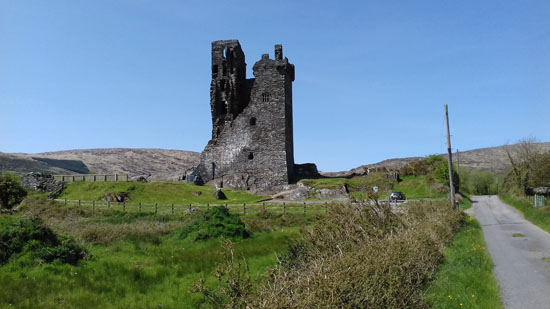
Above - the barren landscape of the Donovan's castle. In 1936 the corner of the tower collapsed. Subsequent repairs in the early 21st century have thwarted further decay. The site has been owned by the State since 2000 and is now open to the public.
Castledonovan, formerly known as Claneahill, is but one of several O'Donovan castles historically, this one having survived the ravages of historical conflict. It is also in an isolated position; being off the beaten track meant that some troubles passed you by. And some would argue that the Donovan's were not quite as warlike as their near neighbours; the MacCarthys, the O'Mahonys, the O'Sullivans and the O'Driscolls.
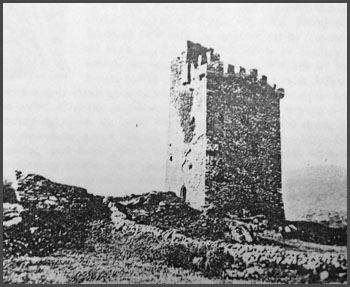
The landscape around the Castledonovan is historic as well as unwelcoming. Barren hills and former marshland made the passage through threatening and unsafe. Archaeological relics include cairns or funeral heaps piled up by the peasantry where dead bodies were found. Known as 'The Graves of the Dead Men' the wild and lonely pass through which the road goes is known as 'The Murdering Glen'. Historians report the area as the former retreat of outlaw gangs. Nearby the 'Judgement Seat', a collection of standing stones, harps back to ancient practices. Geologically it appears to have some volcanic characteristics giving a clue to its origin.
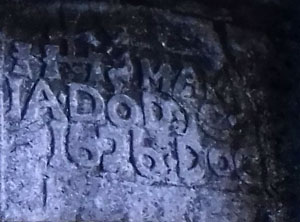 The castle is a regular tower house built on the rock outcrop on the eastern bank of the river. It is about 70 feet high with 91 steps up the spiral staircase. The building overall is 42 feet long and 26 feet wide. The walls are some 6 feet thick and the principal entrance is a Gothic limestone arch on the western side. It is believed the castle we see today was constructed sometime around 1560-1584, probably on the site of an earlier structure. It was surrendered to the English in 1592 but regranted 24 years later. The structure was renovated in the 1620s and a stone records this date. The Cromwellian forces assaulted the castle in 1650, burning its roof and interior. In 1654 it was confiscated and granted to a Lieutenant Evanson of the Cromwellian army. It was never again restored to liveable conditions. The castle is a regular tower house built on the rock outcrop on the eastern bank of the river. It is about 70 feet high with 91 steps up the spiral staircase. The building overall is 42 feet long and 26 feet wide. The walls are some 6 feet thick and the principal entrance is a Gothic limestone arch on the western side. It is believed the castle we see today was constructed sometime around 1560-1584, probably on the site of an earlier structure. It was surrendered to the English in 1592 but regranted 24 years later. The structure was renovated in the 1620s and a stone records this date. The Cromwellian forces assaulted the castle in 1650, burning its roof and interior. In 1654 it was confiscated and granted to a Lieutenant Evanson of the Cromwellian army. It was never again restored to liveable conditions.
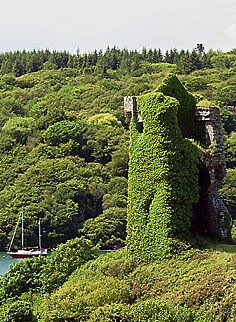
Another Donovan Castle in Cork is Castle Raheen. This picturesque waterside ruin was once the home of the O'Donovans, an ancient Royal family from Gaelic times. Driven out of their homeland in County Limerick by the Norman invasion, they settled in West Cork and in 1560 built the impressive Castledonovan detailed above and this smaller version of similar design near water's edge on the east bank of Castlehaven Harbour. Like Castledonovan we find this a ruin in modern times but it is very well recorded on its own web site page. This can be accessed by clicking the picture of Castle Raheen on the right.
Click website below to go to the Destiny Index.
Website: Click Here
ADDITIONAL INFORMATION
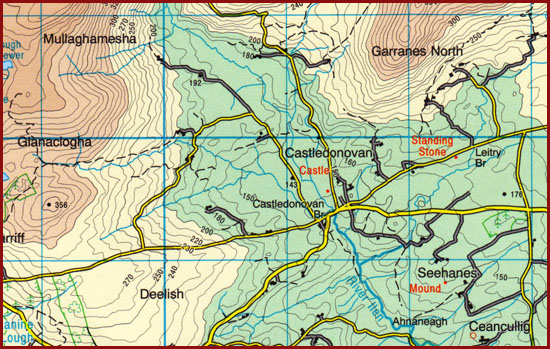
Above a map of north-west County Cork in Munster showing the landscape and location of Castledonovan.
Click below to discover the link with the Osborne family
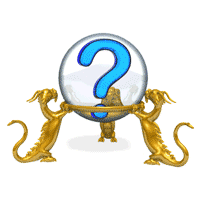 Lydia Bertha Osborne (formerly Donovan)
CONSTRAINTS
Physical access difficult
DESTINY CATEGORY
15th Century, 16th CENTURY, 17th CENTURY, 18th CENTURY first half, 18th CENTURY second half, 19th CENTURY first half, 19th CENTURY second half, 20th CENTURY - second half, 20th CENTURY first half, 21st CENTURY, Historical summary, PLACES
FACILITIES
Access all Year, Access by Road, Access on Foot, Free Entry
LANDSCAPE
Moorland, Mountains
REGION
Ireland
|
|


 Background to the Donovans
Background to the Donovans


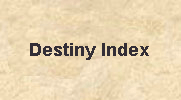
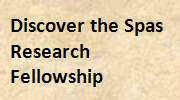
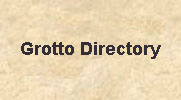
 Tracing the earlier history of the Donovans before they came to England is a fascinated task. Munster has been the traditional heartland of the Donovans since the twelfth century Cambro-Norman invasion. Historically the lineage goes back a lot further however and according to Milesian genealogies Heremon and Heber ruled their conquered land as early as 1699 BC. The Donovans trace their descent back to Heber who was killed by Heremon in a territorial squabble. Such territorial disputes over the centuries led to rivalry between the septs or clans and Castle Donovan in north-west County Cork in the province of Munster is a classic example of the outcome of such rivalry. Earlier Donovan strongholds also included County Kerry . Here the kingship of Munster was being disputed around 977 AD and following the murder of Mahon the kingship moved to Maolmoradh and Donovans were rewarded with a grant of lands for their involvement. Around this time the Donovan or O'Donovan name was assumed and the sept or Clan Cathail established. (The use of O as a prefix denoted grandson of.)
Tracing the earlier history of the Donovans before they came to England is a fascinated task. Munster has been the traditional heartland of the Donovans since the twelfth century Cambro-Norman invasion. Historically the lineage goes back a lot further however and according to Milesian genealogies Heremon and Heber ruled their conquered land as early as 1699 BC. The Donovans trace their descent back to Heber who was killed by Heremon in a territorial squabble. Such territorial disputes over the centuries led to rivalry between the septs or clans and Castle Donovan in north-west County Cork in the province of Munster is a classic example of the outcome of such rivalry. Earlier Donovan strongholds also included County Kerry . Here the kingship of Munster was being disputed around 977 AD and following the murder of Mahon the kingship moved to Maolmoradh and Donovans were rewarded with a grant of lands for their involvement. Around this time the Donovan or O'Donovan name was assumed and the sept or Clan Cathail established. (The use of O as a prefix denoted grandson of.)
 confiscated and their territorial castles wrecked. Such was the fate of Castledonovan which had been the focus of the Donovans for decades. Thereafter it remained unoccupied and derelict.
confiscated and their territorial castles wrecked. Such was the fate of Castledonovan which had been the focus of the Donovans for decades. Thereafter it remained unoccupied and derelict.
 Also the Irish have participated in defeating many threats to the British Isles with participation in World Wars on the side of England. Earlier they were participant in the Crimean Wars with Russia as the number of cities with trophy cannons testify. The memorial tablet to the left confirms the Donovan participation with British military. In this example it was a voluntary involvement with the Anglo-French forces that cost the life of this soldier at the Battle of Malakoff, a part of the Siege of Sevastopol.
Also the Irish have participated in defeating many threats to the British Isles with participation in World Wars on the side of England. Earlier they were participant in the Crimean Wars with Russia as the number of cities with trophy cannons testify. The memorial tablet to the left confirms the Donovan participation with British military. In this example it was a voluntary involvement with the Anglo-French forces that cost the life of this soldier at the Battle of Malakoff, a part of the Siege of Sevastopol.


 The castle is a regular tower house built on the rock outcrop on the eastern bank of the river. It is about 70 feet high with 91 steps up the spiral staircase. The building overall is 42 feet long and 26 feet wide. The walls are some 6 feet thick and the principal entrance is a Gothic limestone arch on the western side. It is believed the castle we see today was constructed sometime around 1560-1584, probably on the site of an earlier structure. It was surrendered to the English in 1592 but regranted 24 years later. The structure was renovated in the 1620s and a stone records this date. The Cromwellian forces assaulted the castle in 1650, burning its roof and interior. In 1654 it was confiscated and granted to a Lieutenant Evanson of the Cromwellian army. It was never again restored to liveable conditions.
The castle is a regular tower house built on the rock outcrop on the eastern bank of the river. It is about 70 feet high with 91 steps up the spiral staircase. The building overall is 42 feet long and 26 feet wide. The walls are some 6 feet thick and the principal entrance is a Gothic limestone arch on the western side. It is believed the castle we see today was constructed sometime around 1560-1584, probably on the site of an earlier structure. It was surrendered to the English in 1592 but regranted 24 years later. The structure was renovated in the 1620s and a stone records this date. The Cromwellian forces assaulted the castle in 1650, burning its roof and interior. In 1654 it was confiscated and granted to a Lieutenant Evanson of the Cromwellian army. It was never again restored to liveable conditions.

